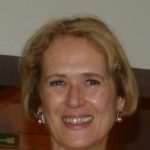Link to Pubmed [PMID] – 12729759
J Mol Biol 2003 May; 328(4): 847-62
Double strand break (DSB) repair plays an important role in chromosome evolution. We have investigated the fate of DSBs as a function of their location along the yeast chromosome XI, in a system where no conventional homologous recombination can occur. We report that the relative frequency of non-homologous endjoining (NHEJ), which is the exclusive mode of DSB repair in the internal chromosomal portion, decreases gradually towards the telomere, keeping the absolute frequency nearly constant, and that other repair mechanisms, which generally involve the loss of the distal chromosomal fragment, appear in subtelomeric regions. Distance of the DSB from chromosome ends plays a critical role in the global frequency of these repair mechanisms. Direct telomere additions are rare, and other events such as break-induced replication, plasmid incorporation, and gene conversion, involve acquisition of heterologous sequences. Therefore, in subtelomeric regions, cell survival to DSBs is higher and alternative modes of repair allow new genomic combinations to be generated. Furthermore, subtelomeric rearrangements depend on the recombination process, which, unexpectedly, also promotes the joining of heterologous sequences. Finally, we report that the Rad52 protein increases the efficiency of NHEJ.

